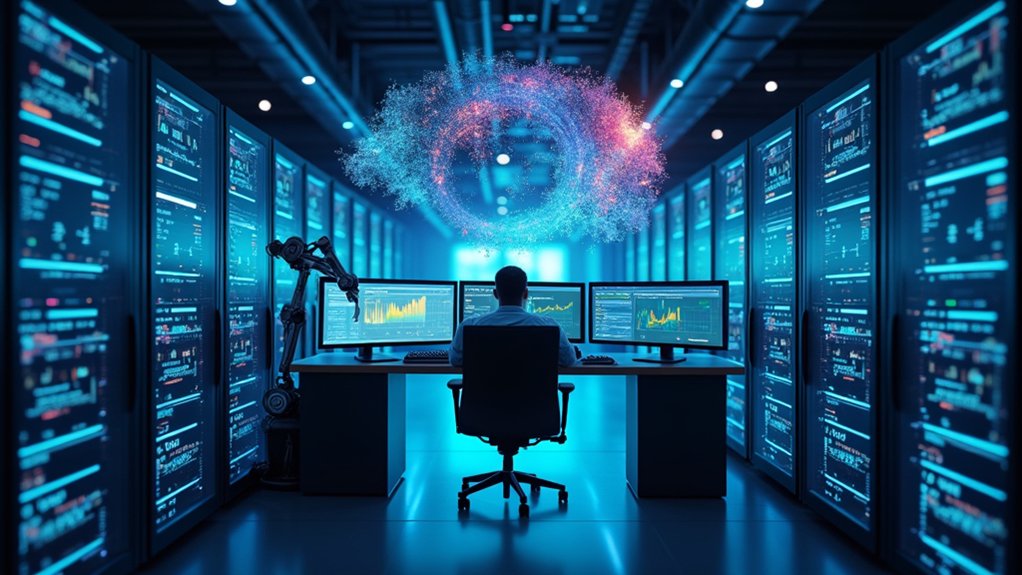Nearly every data professional now relies on AI to do the heavy lifting. Gone are the days of mundane data cleaning and basic visualization. The landscape has shifted dramatically. Tools like Tableau and Power BI still dominate visualization, while platforms such as H2O.ai and Google Cloud AI Platform handle the complex machine learning tasks that once required specialized expertise.
The real game-changer? Automation. AI now cleans, merges, validates, and preps data in minutes, not days. It spots patterns humans miss. No surprise there. Machines were always better at sifting through mountains of information. What’s interesting is how they’re predicting trends by incorporating everything from social media chatter to weather forecasts.
AI doesn’t just speed up data prep—it transforms it, catching signals humans miss while integrating diverse sources to predict tomorrow’s trends.
Real-time analytics has exploded. Data gets processed on arrival. Fraud detection happens instantly. Pricing adjusts dynamically. No waiting.
NLP capabilities have transformed how people interact with data. Non-technical folks ask normal questions and get intelligent answers. The machines even write narratives explaining complex visualizations. It’s like having a translator between you and the numbers. Pretty handy.
Data analysts aren’t spending their days formatting spreadsheets anymore. They’ve moved up the food chain to strategy and decision-making. AI handles the grunt work. Tools like GitHub Copilot write and debug code. Julius AI and Claude.ai let regular employees query data without knowing SQL. Revolutionary stuff.
The democratization is real. Low-code platforms like DataRobot and Akkio mean anyone can play. Free versions of sophisticated tools abound. The barriers are falling. Platforms like KovaionAI have made significant impacts with their customizable dashboards that allow users to tailor analytics to their specific business needs.
Specialized AI is everywhere. Legal teams have their models. Healthcare has theirs. Vector databases like FAISS and Pinecone manage the heavy lifting of semantic search. Modern platforms simplify development by offering centralized training spaces for processing massive datasets efficiently.
Visualizations aren’t just prettier—they’re smarter. Static charts? Dead. Interactive dashboards rule. AI suggests the best visualization for your specific data and then explains what you’re looking at.
The machines aren’t taking over. They’re just doing the boring stuff so humans can focus on what matters.


